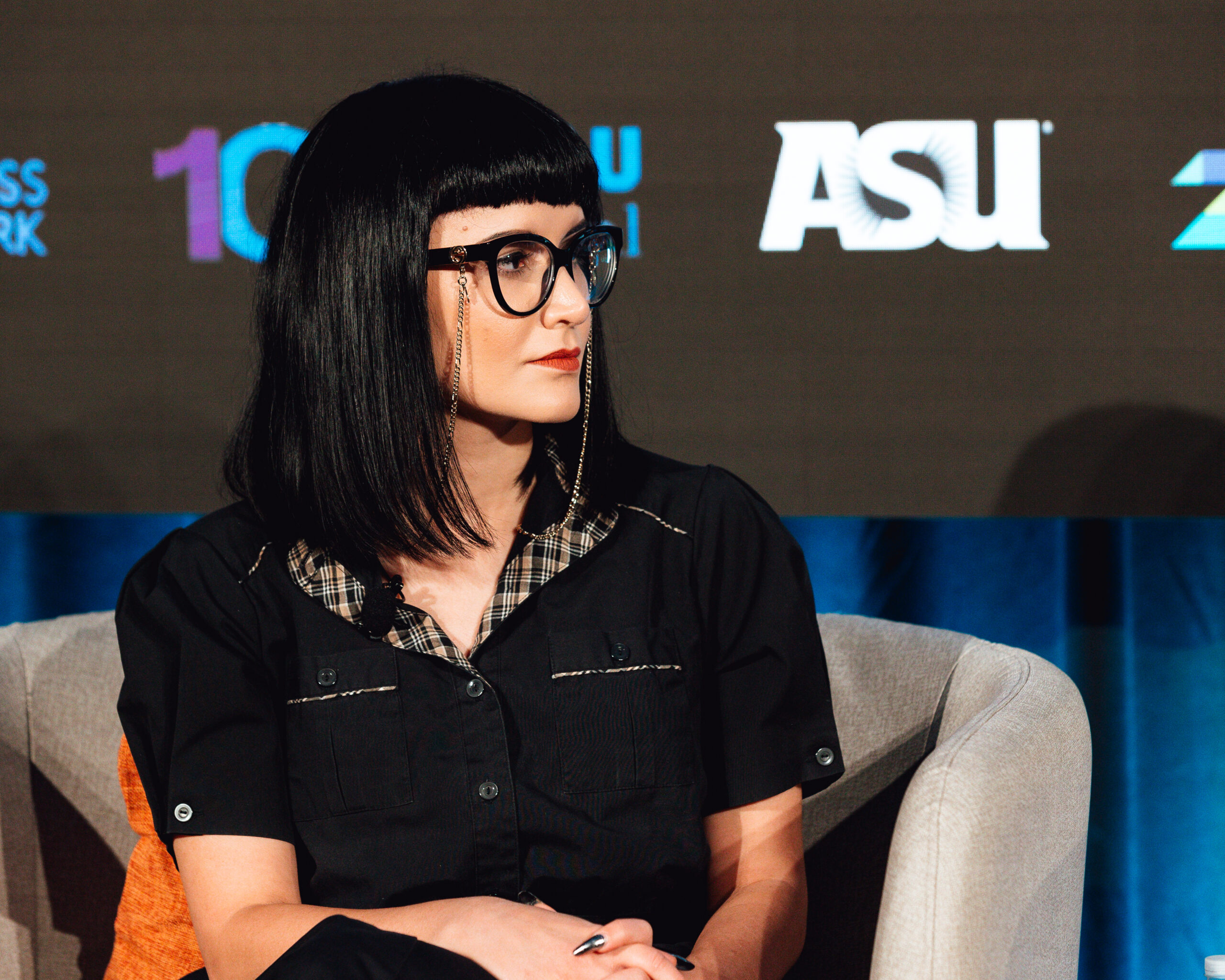
Photo by Chad Brady.
Mashinka Firunts Hakopian is an Armenian writer, artist, and researcher. Her work is concentrated in media studies, feminist and queer studies, visual culture, contemporary art, and SWANA (Southwest Asia and North Africa) diaspora studies. Before sitting down on a panel for the Zócalo event “What Is the State of Surveillance?”—presented in partnership with ACLU of Southern California and The Progress Network—she joined us in our green room to chat about Armenian futurism, what constitutes “Mashinka mix,” and a true diva she loves, Cher.
How do you define your style?
I’ve been defining my style as “hye fembot,” with hye spelled “h-y-e,” which is the phonetic transcription for the word “Armenian.” So kind of ultra-maximal-SWANA-fem-retro-robotic mélange.
You’re on a road trip. What is your go-to snack?
Almonds and goji berries. In my household, we call it “Mashinka mix.”
How long has that been the mix?
I think at the point at which the speed and pace of everyday life began to outpace the ability to prepare actual meals and food.
When you do have time for a real sit-down meal, what is on your plate?
Food is so important and transmits so many cultural, embedded values. I think a Lebanese Armenian meal of muhammara and kibbeh. Muhammara is a pomegranate walnut paste with bread crumbs that you can eat with vegetables or with bread.
You think a lot about Armenian futurism. What’s one work in this space that’s been on your mind?
Right now, as we’re speaking, there’s been an ethnic cleansing unfolding in the Republic of Artsakh, which is populated by Armenians, executed by the state of Azerbaijan. And so it feels both crucially urgent to be thinking about Armenian futurism and also takes a bit of crushing effort to conjure that imaginary. And one of the works that I’m most deeply excited by in that vein is a work by Andrew Demirjian and Dahlia Elsayed, called “Which Yesterday Is Tomorrow?” It recreates a 19th-century SWANA coffeehouse. In that period, the Ottoman Empire was marked by cultural cross-fertilization, cohabitation, imaginaries of collective cultural production and sociality.
They took the coffeehouse as a template and created this geometric, brightly colored SWANA-patterned what they call “a rest stop for the future.” And you can engage in different forms of sociality there that are based on slow time, that are based on spaces for reflection—the kind of reflection that’s not afforded to us given the daily rhythms that we’re enmeshed in. And then they have SWANA musical elements embedded in it, as well as a series of poems that they whisper, written by SWANA poets.
You recently spoke about the changing meaning of the word “diva” on Meghan Markle’s “Archetypes” podcast. Who’s a diva, by the original definition, that you love?
I have to say Cherilyn Sarkisian [Cher]—I mean as someone who has embodied some of the most seductive aspects of the diva, but also someone who has done the work of defining what it means to inhabit that persona. She was the person who was famously quoted as saying something like: The diva is someone who writes their own narrative. That sort of claiming of agency that she performs throughout her career is so enormously powerful, particularly to the Armenian diaspora. Growing up in Glendale, to see that representational reflection was absolutely magical.
Speaking of growing up in Glendale, where’s one of your favorite public spaces in L.A. to go?
There’s a street in Glendale called Artsakh Street, and there’s a coffee shop there [Urartu] with publicly accessible tables that people sit at all day drinking one cup of coffee. The coffee shop is where my mother used to meet her clients. She was an immigration paralegal who specialized in political asylum cases. So that place holds a kind of familial ancestral mystique for me, as well as having the distinction of being the space that welcomes a certain kind of public sociality that one doesn’t always find.
Last question: What was your favorite book to read as a kid?
Little Women. I deeply identified with Jo—over-identified, I would say, and her plight of trying to fight “the lions of injustice.”



